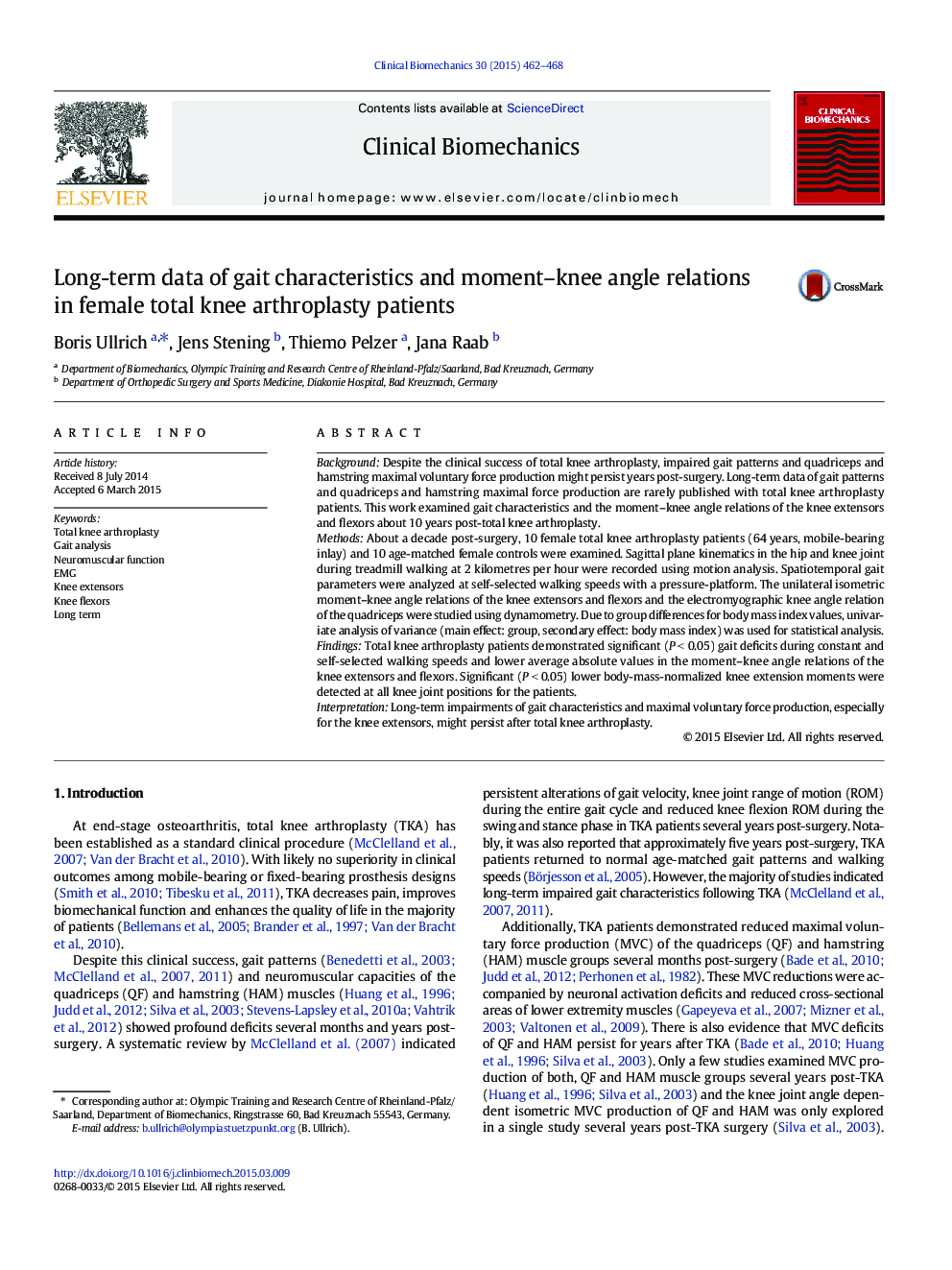| Article ID | Journal | Published Year | Pages | File Type |
|---|---|---|---|---|
| 6204793 | Clinical Biomechanics | 2015 | 7 Pages |
â¢We examined females 10 years post-total knee arthroplasty relative to controls.â¢Impaired spatiotemporal gait parameters occurred after total knee arthroplasty.â¢Deficits in sagittal plane kinematics were found after total knee arthroplasty.â¢Reduced knee extensor force production occurred following total knee arthroplasty.
BackgroundDespite the clinical success of total knee arthroplasty, impaired gait patterns and quadriceps and hamstring maximal voluntary force production might persist years post-surgery. Long-term data of gait patterns and quadriceps and hamstring maximal force production are rarely published with total knee arthroplasty patients. This work examined gait characteristics and the moment-knee angle relations of the knee extensors and flexors about 10Â years post-total knee arthroplasty.MethodsAbout a decade post-surgery, 10 female total knee arthroplasty patients (64Â years, mobile-bearing inlay) and 10 age-matched female controls were examined. Sagittal plane kinematics in the hip and knee joint during treadmill walking at 2 kilometres per hour were recorded using motion analysis. Spatiotemporal gait parameters were analyzed at self-selected walking speeds with a pressure-platform. The unilateral isometric moment-knee angle relations of the knee extensors and flexors and the electromyographic knee angle relation of the quadriceps were studied using dynamometry. Due to group differences for body mass index values, univariate analysis of variance (main effect: group, secondary effect: body mass index) was used for statistical analysis.FindingsTotal knee arthroplasty patients demonstrated significant (PÂ <Â 0.05) gait deficits during constant and self-selected walking speeds and lower average absolute values in the moment-knee angle relations of the knee extensors and flexors. Significant (PÂ <Â 0.05) lower body-mass-normalized knee extension moments were detected at all knee joint positions for the patients.InterpretationLong-term impairments of gait characteristics and maximal voluntary force production, especially for the knee extensors, might persist after total knee arthroplasty.
